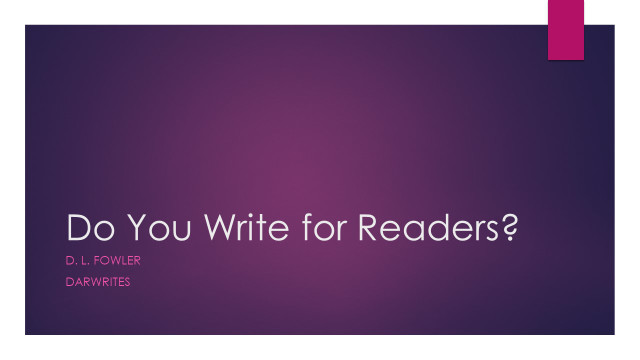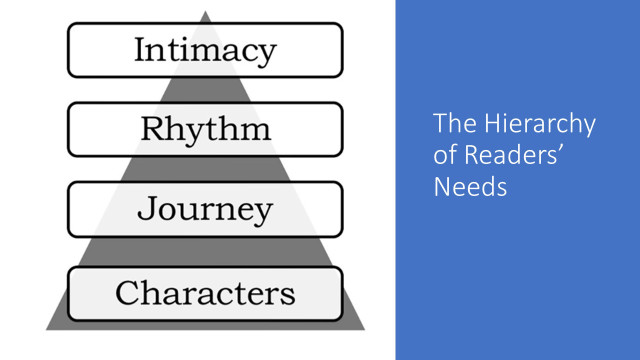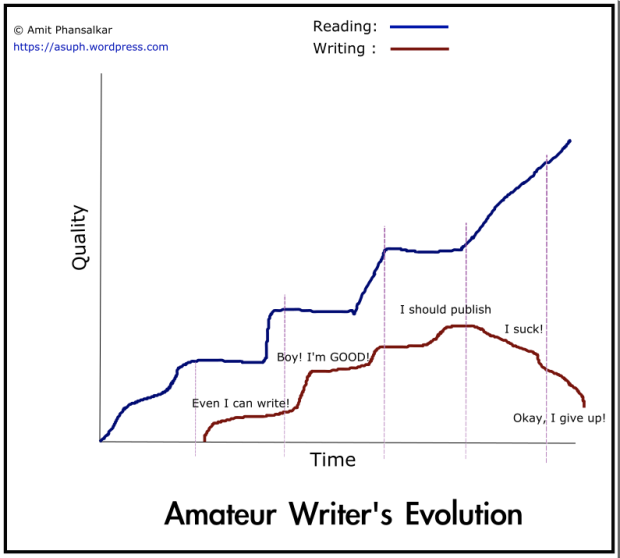
Dear Writers,
I’d like to introduce you to DL Fowler, author of Transform Your Fiction: Essential Tools and Lincoln Raw. Take it away, DL!
Do You Write for Readers?I get inside people’s heads and invite readers along for the ride. DL Fowler
Another book on writing. Just what the world needs. How many ways can you say draw three-dimensional characters, create conflict, don’t let the action lag in the middle of your story, no passive voice, … blah … blah … blah? By the way, are we ever going to settle the character-driven vs. plot-driven debate?
Take a breath. Answer me this. Not why do we write, but why do people read? Hmm … that question reminds me of a story—but then again, most questions remind me of stories.
Ned lived for the day he could step out from his father’s shadow and chart his own path to success. That dream hit a roadblock when the old man died unexpectedly, leaving Ned at the helm of a highly successful drill bit manufacturing company that had been in the family for two, now going on three, generations. On his first day as CEO, Ned called his father’s key employees into “the boss’s office” to find out what kind of team he’d inherited. When he got to the last interviewee, his father’s right hand man and national VP of sales, Ned’s hopes were sky-high.
For the first ten minutes of the interview, Ned’s liked everything he heard from the VP. Then Ned asked, “Where do you see the company in ten years?”
The VP tugged nonchalantly at his monogrammed shirt cuff. “We’ll be the biggest drill bit manufacturer in the world, just like we are today.”
Ned glared at the VP. “Are you telling me the star of this company doesn’t know what we’re about?”
The VP stared back at him blankly.
Ned leaned back in his chair and crossed his arms. “People don’t need drill bits, they need holes. Ten years from now, when everyone is making holes with lasers, you’ll have us making drill bits?”
People read for a reason. Before we focus on writing tools and techniques, we must understand why people read. What do readers need that attracts them to books?
After World War II, Abraham Maslow explained human motivation with his Hierarchy of Needs. He said that meeting certain physiological and security needs doesn’t motivate, but failure to satisfy those needs demoralizes people. Once those threshold requirements are met, however, people awaken to the motivational power of higher level needs like belonging, esteem, and actualization.
People read stories in order to achieve the sense of fulfillment that Maslow called actualization. They either need to grow psychologically or to validate growth they have already achieved. Regardless of genre—whether our stories are short or novel length, memoirs or narrative non-fiction, or poems—readers pick up books to discover memorable people wrestling with compelling problems. They don’t want simply to be told about those journeys. They want to experience them. The rhythm of our stories and the intimacy we create determine how deeply readers become engaged in our characters’ journeys.
Characters, journeys, rhythm, and intimacy make up the Hierarchy of Readers’ Needs. Satisfying those needs is the key to masterful storytelling.
A story’s arc is the path characters take through Maslow’s hierarchy of needs in order to achieve actualization. A writer’s job is to help readers vicariously pursue the characters’ journeys. We do that by meeting particular needs readers bring to the experience of reading. Characters, journeys, rhythm, and intimacy make up the Hierarchy of Readers’ Needs. Satisfying those needs is the key to masterful storytelling.

DL Fowler
The pyramid above shows the relative importance of each need. Understand what that means. We can’t simply skip the first three needs and give our readers only intimacy. Each need builds upon the foundation of those beneath it.
Without characters and journeys, readers don’t even have a story to follow. When we make characters memorable, journeys compelling, and add engaging rhythms, readers are drawn deeper into our stories for intimacy. Intimacy happens when readers find themselves walking in a character’s shoes, pursuing the same goals, facing the same obstacles, and experiencing the same emotions.
Trust is the key that unlocks intimacy for readers—trust that we will not hold back any necessary element of the journey, trust that the characters will share the most secret parts of their souls, trust that we will bleed on the page.
A few talented authors appear to fulfill the Hierarchy of Readers’ Needs intuitively. Seemingly with little effort, they create memorable characters, journeys toward goals readers want to embrace, rhythms of conflict that evoke empathy for their characters’ growing pains, and intimacy. The truth is that intimate fiction happens the same way intimacy is achieved in real life—with intentionality. To be intentional we must study and understand the techniques of our craft, but always apply these techniques with a focus on the reasons readers pick up books in the first place.
How do you intentionally help readers share your characters’ emotions? What do you do to show readers that your stories are written for them, or is your writing mostly about you?

DL Fowler is the author of a book on writing craft, Transform Your Fiction and shares his tips on writing through workshops for new and experienced authors. He lives in Gig Harbor, Washington and has authored the critically acclaimed biographical novel, Lincoln Raw, as well as two suspense novels, Ripples and Lincoln’s Diary.
Advertisements Share this:





